Intel Performance Midrange
In recent months we have said in CPU recommendations that Intel and AMD enjoyed parity in the price ranges and processor speeds where they competed. Of course, AMD did not compete at the top speeds. We normally added that Intel still enjoyed a significant overclocking advantage if that was an important feature for you.
Things were shaken up quite a bit with the introduction of the new Intel Core i7 Socket 1366 CPU. Phenom did not compete nearly as well against the Core i7, but Phenom II is now leveling that playing field - in the upper midrange to low high-end where Phenom II now has competing speeds. In addition, the Phenom II 45nm finally removes the last real impediment to choosing AMD in this price range as it overclocks very well indeed and gives Intel a run for the money - clock for clock.
That makes choosing between the Intel Core i7 system below or the AMD Phenom II system on the next page a more difficult decision than it has been in quite a while. Both systems contain parts that have been chosen for their excellent overclocking abilities, and both motherboards can deliver the 3.8GHz+ overclocks that Core i7 and Phenom II are capable of reaching.
| Intel Performance Midrange PC | ||
| Hardware | Component | Price |
| Processor | Intel i7 920 Nehalem Socket 1366 (2.66GHzx4 4x256KB L2, 8MB L3 Cache) | $295 |
| Cooling | Vigor Monsoon III LT for Socket 1366 | $60 |
| Video | EVGA 01G-P3-1282-AR GeForce GTX 280 SuperClocked Edition 1GB | $320 |
| Motherboard | GIGABYTE GA-EX58-UD3R LGA 1366 Intel X58 ATX | $185 |
| Memory | G.SKILL 6GB (3 x 2GB) DDR3-1333 (PC3 10666) Triple Channel Kit | $145 |
| Hard Drive | Seagate Barracuda 7200.11 ST31000333AS 1TB | $110 |
| Optical Drive | LG BD/HD DVD / 16x DVD+/- RW GGC-H20LK | $99 |
| Audio | ASUS Xonar DX 7.1 | $90 |
| Case | Antec Nine Hundred Black Steel ATX Mid Tower | $100 |
| Power Supply | SILVERSTONE ST70F 700W SLI Ready CrossFire Ready 80 PLUS Certified Modular Active PFC | $100 |
| Display | ASUS VW246H Black 24" 2ms(GTG) HDMI Widescreen LCD Monitor (1920x1080) | $290 |
| Speakers | Logitech G51 155 watts RMS 5.1 Surround Sound Speakers - Retail | $90 |
| Input | Microsoft CA9-00001 Black PS/2 Standard Keyboard and Optical USB/PS2 Mouse - OEM | $16 |
| Operating System | Microsoft Vista Home Premium OEM | $99 |
| Bottom Line | $1999 | |
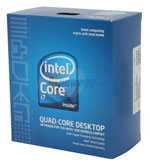 |
The i7 920 is the lowest priced Intel Core i7 you can currently buy - the other two choices are in the $600 to $1000 price range. Don't assume, however, that the 920 is not a powerful processor. The i7 920 is capable of reaching the performance levels of the top i7 CPUs, because it has also proved to be a dynamite overclocker for those who care about that, and that are also willing to provide decent cooling to the i7 920.
You start with a processor that is 30% faster in some parameters than a Core 2 Quad, and then you find you can also overclock this 2.66GHz CPU to 3.8GHz to 4GHz with careful tweaking and better cooling. As you saw in our Phenom II Launch review, the 920 reached as high as 3.8GHz at stock voltage and 4.0 GHz when overvolted to 1.35V. That is a 50% overclock. You will certainly be very happy with Core i7 base performance, but if you are interested in overclocking you will be ecstatic with this new CPU.
 |
The Gigabyte GA-EX58-UD3R has the distinction of being the lowest priced X58 chipset motherboard you can currently buy. Others will soon join that $200+/- club shortly providing more X58 value choices. You probably also noticed that Gigabyte is trying to get as much mileage as possible from their UD3R designation. It seems reasonable to hold on to a good name as much as possible. AnandTech is in the process of testing this value Gigabyte board, and more info will come your way soon. Early user reports are very favorable, including great reports on overclocking. That was enough positive news to choose this Gigabyte for the Performance Midrange Intel System.
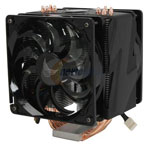 |
Several well-known coolers offer optional adapters for the Intel Socket 1366, but the cooler choice to mate with the Gigabyte X58 board is the Vigor Monsoon III LT. The last time a Vigor Monsoon was reviewed it was an effective but loud TEC (Thermo Electric Cooling) design. This Monsoon is a standard vertical heat-pipe air cooler, with effective and quiet push-pull cooling. The Monsoon appears a good match to the OC capabilities of the i7 920.
 |
At present, most of the editors at AnandTech prefer the performance of GPU solutions from AMD/ATI these days… that is, except when running Intel Core i7. The X58 chipset/Core i7 works best with an NVIDIA video card and drivers. AMD is aware of the issue and is working to provide improved drivers for the i7 platforms, but for now the choice for i7 system video card is the (deep breath…) EVGA 01G-P3-1282-AR GeForce GTX 280 SuperClocked Edition 1GB. This EVGA card comes factory overclocked to a core clock of 621MHz and an effective memory clock of 2268MHz. This video card really is not the equal in performance of the 4870 X2 used in the AMD Performance Midrange system, but the stability and trouble-free operation makes up for the small performance loss - at least for today.
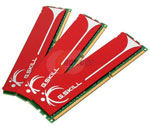 |
The Intel i7 system includes the G.Skill triple-channel DDR3-1333 6GB memory kit. To be blunt, most of the 1333 3x2GB triple-channel kits use the same memory chips, although there are sometimes differences in the SPD chip on the DIMM. We chose the G.Skill on the basis of best price for a 6GB triple-channel DDR3-1333 kit from a known brand. You can select from a number of quality memory suppliers, but make sure to include their warranty and customer service reputation in your decision.
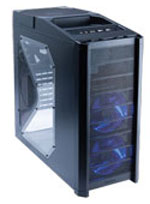 |
The case receives an upgrade with the selection of the well-regarded Antec Nine Hundred that bottom mounts the power supply and provides plenty of internal storage. Cooling is provided by 120mm fans and a massive 200mm top exhaust fan.
 |
The power supply is the well-regarded Silverstone ST70F 700W SLI/CrossFire Ready 80 PLUS Certified modular PSU. The Silverstone 700W has made almost everyone's top performance list for a PSU and it is a good buy at its regular selling price. At the current selling price of $100, it is an outstanding value. The Silverstone is a modular power supply with the flexibility offered by custom cable selection and arrangement.
 |
The ASUS Xonar DX 7.1 is one of the top-performing audio cards on the market today. It is a great upgrade to the onboard sound if you want better sound quality. Game compatibility is excellent, but most game creators assume everyone has a Creative Labs sound card.
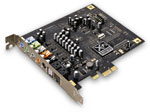 |
If your main reason for having a powerful i7 computer is gaming, you may prefer the Creative 7.1 Sound Blaster X-FI Titanium at the same price that we used in the AMD Performance Midrange system. In our opinion the sound quality is better on the ASUS or an HT sound card, but game compatibility will never be a question with a Creative Labs sound card.
 |
The speakers have been upgraded to the Logitech G51 155 watts RMS 5.1 surround sound speakers. They are selling for $90 after a $40 rebate, which is a great value on these well-regarded powered speakers.
 |
The LCD display resolution is the same 1080p HD resolution chosen for the Value Midrange systems. The size of the monitor increased to 24" so everything on screen is just a little larger. The ASUS VW246H 24" provides the preferred HDMI input, as well as DVI and an analog VGA port. Panel speed is rated at an incredible 2ms, but we have found most current LCD panels perform similarly and the speed rating does not really guarantee very much. The ASUS monitor provides a sharp image, good colors, and fast panel speed at a very good price of $290. For more information on what matters in a monitor and how to read LCD specifications, take a look at our Holiday 2008 Display Guide.
The remaining components are the same as our Value Midrange systems. The hard drive remains a 1TB Seagate. The optical drive is the LG BD. The Microsoft OEM keyboard and optical mouse provides input, and Vista Home Premium OEM runs the system. For more information on these components, refer to page 3.










77 Comments
View All Comments
Jorgisven - Monday, January 12, 2009 - link
I think one of the big qualms about calling this "mid-range" is that in general, the mid-range has been defined by the absence of the exponential cost/power ratio taking place. Right now, there is a substantial cost for only a fractional performance increase in these systems over something that costs half as much. Even with as much as the claimed "30 percent" performance increase, you're spending twice as much or more. You can build an amazing system, referencing the entry-level article, and the E7300 comes within 72% of the 965! Not the 920... however, the price of that system is 42% of even the 920. Granted, it's not just the processor that's different...With just an extra $50-100 on that entry-level upgrading to the E8600, you get within "88%"! So, in the end, we'll call it a 10% performance increase for a 200% price increase. (because that article references the 965, not this lower 920. I guessed on the 2% difference between the two).And a GTX280? Since when is that mid-range performance? It's pretty overkill for the 1920x1080 res of the monitor in my opinion (but it's just that). I'm of the opinion that you should not spend more on your graphics card than your display for a few reasons:
Displays are harder to upgrade, due to higher cost of shipping when trying to sell. Also, they technically aren't supposed to be thrown away (heavy metals) so they are more expensive to take care of if/when they break out of warranty. I would typically spend more on the monitor, and if needed, upgrade the card later, rather than the other way around.
strikeback03 - Monday, January 12, 2009 - link
Using the numbers published in Anand's release review of the Phenom II, here is the advantage the i7 920 holds over the E8600 and the E6750. The E7300 was not tested, and the E6750 generally performed better than the tested E7200, which is why I picked it to roughly represent E7300 numbers. All these are such that 100 means twice as fast or half the time to complete.920 over E8600: 50.6, 38.7, 72.4, 136.3, 44.8, 84.3, -6.8, 103.3, 148.6, 111.5, 43.2, 87.6, 64.2, 114.6, 59.3, -5.7, -3.4, 42, -2.7
920 over E6750: 97.1, 82.2, 118, 214.1, 89.7, 135.4, 24, 174.2, 216.7, 184.5, 100.4, 151.6, 122.2, 180.9, 94.2, 11.9, 19, 74.8, 2.9
Other than some current games and single-core Cinebench, the 920 is generally at least double the E6750 and 60% faster than the E8600. Replacing the processor, motherboard, memory, and power supply from the E7300 system guide with those from the 920 system guide gives a system price of $1268, so 52.2% higher for what is often more than 100% more performance in tested benchmarks. Obviously for lots of games or other single-threaded programs and internet, etc, the cheaper system is fine, but the 920 offers lots more performance for not a ton more money and on these programs does better than diminishing returns. Getting the price of an E8600 from Newegg today, switching that for the E7300 costs 983, making the $1268 920 system 30% more expensive for upwards of 60% better performance in CPU-intensive applications.
Wesley Fink - Monday, January 12, 2009 - link
As I stated on the first page it is my belief that a mid-range system, as defined in this article, should be “computing solutions with some staying power in the market”. I certainly don’t expect that of Entry or Bargain systems. That is the reason I stretched to select Mid-Range systems with Phenom II and an entry i7 Socket 1333 system at the top.As I said in the Guide, I had first put together a balanced Phenom 9950 system at the $1400 complete system price point. When Phenom II was introduced with an entry $235 920 part (just $55 more than the price of the 9950 on that day) and a top 790FX motherboard dropped its price to $105 it made more sense to pick Phenom II instead at that same $1400.
The Guide was ready to go last week with very different system selection. We did not have a Phenom II or an i7 in our recommendations then. However we knew Phenom II was coming Thursday, and we also knew it would shake up our System selections. That is why we reworked all the systems over the weekend and delayed posting until today.
Jorgisven - Monday, January 12, 2009 - link
Granted, by the time it gets around to upgrading a system using the Wolfdale or Yorkfield architecture, they will be hard pressed to find something better to upgrade to, as it seems that technology is getting dropped. I just feel this article is about 5-6 months early. I think the prices for these parts will be "mid-range" in about that time or so. So I guess this is a good planning article if you're not doing it this month or next...A well thought-out article, but I just disagree with the timing, a bit.
tester3000 - Monday, January 12, 2009 - link
That system is clearly not mid-range. Mid-range is around $800. That's a freaking high end and the $2000 is ultra-high end. Not many people can afford over $1000. $800 is the sweet spot for most people. Without monitor of course. Add another $200 for monitor.boboko - Tuesday, January 13, 2009 - link
>"That system is clearly not mid-range. Mid-range is around $800. That's a freaking high end and the $2000 is ultra-high end. Not many people can afford over $1000. $800 is the sweet spot for most people."Maybe. But the type of people who read Anand Tech and build a system from components will almost always keep about half the stuff from their old system. I'm getting ready to build a new PC, and all I'll buy is the CPU, MB, and memory. I'm still debating whether to buy a new video card, or wait a month or two for the prices to go down. But I'll keep my drives, my monitor, my case, my OS, my power supply, and my sound card and speakers, so even using these components that you claim are out of anyone's price range, I'll only be spending around $500, and I might make some of that back selling my old MB and CPU as a barebones that I stick into one of the several cases and PS's I got for free after rebate when Fry's was selling them evey month.
strikeback03 - Monday, January 12, 2009 - link
well, "most people" buy prebuilt from Dell or their local Best Buy, etc. For those building their own system, $1500 would generally qualify as midrange.The budget guide had a few builds under $1000 including monitor.
Jorgisven - Monday, January 12, 2009 - link
I'd agree. "Most people" will not be reading articles like this. "Most people who are looking at building their own" have a good idea of their budget, and it's generally higher than "most other people", because performance and control is more important generally speaking.elerick - Monday, January 12, 2009 - link
I have to agree with the author on this. He talked about the idea of reworking midrange, but ultimately stated his case for not changing.You can't please everyone, I build a new rig every 2 yeaars and I always do exactly what this author has put into an article. He choose the latest arcitectures and then picked the most affordable version / upgradeable. That is why the Core i7 920 ($300) and Phenom II ($235 & $275) were picked. I couldn't agree more with those picks for the month of January. Next month those picks could change, based on Intels counter pricing to Phenom II launch.
7Enigma - Monday, January 12, 2009 - link
From article:"Phenom II performance is more in line with Intel's latest Core i7, and for that reason we really wanted to select the Phenom II 920 for the AMD Value Midrange."
OK, the new Pheom II processors are definitely a good step in the right direction but this is a bit misleading to say IMO.